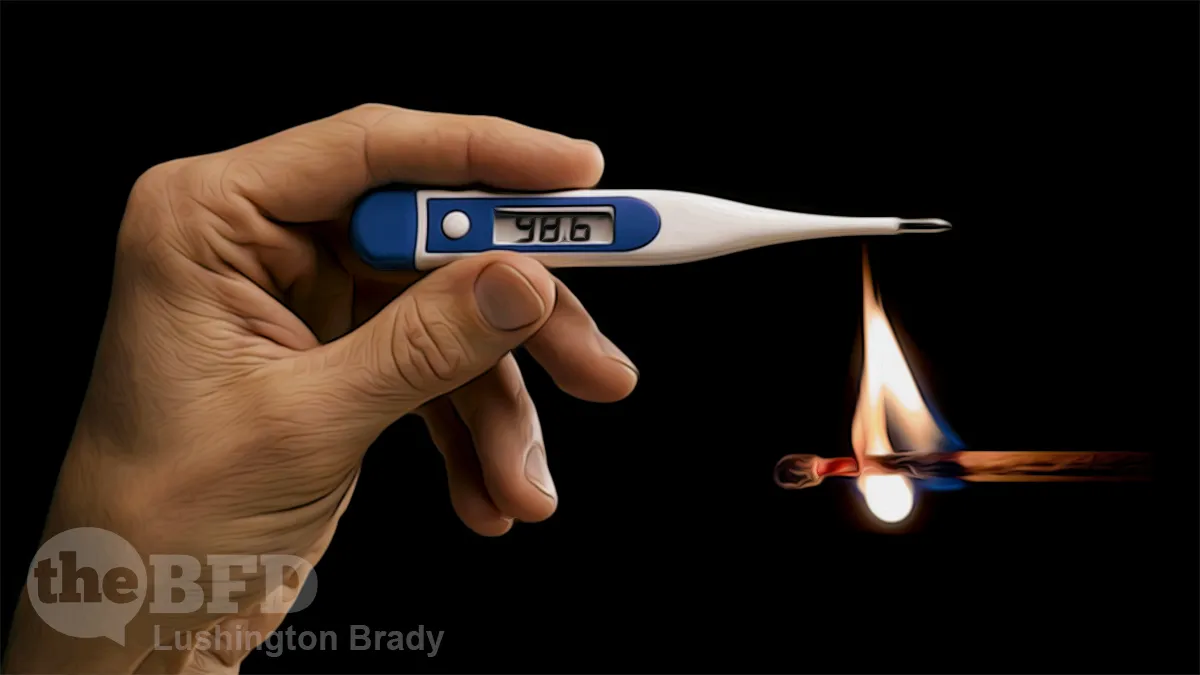Whenever the legacy media and climate alarmists prattle about “record temperatures”, they rarely bother to qualify their hysteria. Understandably, really: because they’re invariably talking about differences in the tenths, if not hundredths of degrees. After all, who’s going to be overly panicked if the media were to truthfully say that the hottest day this summer was so marginally hotter than one 10 years ago that you wouldn’t even be able to see it on a thermometer?
In fact, the difficulty of reading such fine measurements on old-school mercury thermometers, as compared to modern laser digital thermometers, is a persistent problem in compiling long-term temperature records. Add to that, the fact that laser thermometers can record even the briefest fluctuation in temperature, and you’re left comparing apples with pumpkins.
The climate lobby claim that they can reconcile such disparate records by “tuning” or “adjusting” them. This is not entirely unreasonable, but there remains the problem that every time you fiddle with raw data, the potential for bias creeps in.
And a much-delayed FOI release from Australia’s Bureau of Meteorology suggests that there is indeed a lot of bias – and it all runs one way.
A dispute over how the Bureau of Meteorology records daily temperatures is hotting up, with the release of more than 1000 pages of data that show new probes can record different temperatures to mercury thermometers in the same location at the same time. The documents, released after a years-long Freedom of Information campaign, show temperature measurements taken using updated BOM probes in automatic weather stations at the Brisbane Airport site could be up to 0.7C warmer than the temperature taken using a traditional thermometer at the same time at the same site.
Comparing parallel data – that is, measurements taken by both modern and old-school thermometers in the same location at the same time – is one useful way of analysing how honestly records are being reconciled. Strangely, the BOM has been notably reluctant to let outsiders make such a comparison.
More than three years after a FOI request for parallel data was lodged by scientist John Abbot, the BOM released three years of data on Easter eve after the matter was taken to the Administrative Appeals Tribunal.
In the end, the BOM released only limited data.
It’s almost like they’re trying to hide something.
The bureau has long claimed the readings are identical but critics have said the BOM was not following World Meteorological Organisation guidelines on how they should be used.
Given that even small variations in temperature recordings can have an impact on the long-term record, accuracy is vital.
The main issue is how well temperatures recorded by new technologies can be compared to earlier methods to establish a continuous record.
The BOM has been adamant that its own comparison shows no significant difference.
Yet analysis of the data by scientist Jennifer Marohasy has found a statistically significant difference exists. Over the three-year period for which records have been made available, probes returned temperatures higher than the mercury thermometers placed alongside them 41 per cent of the time.
In other words, modern records are systematically biased toward higher temperatures.
Dr Marohasy said the BOM had not disputed that the probe at Brisbane Airport had recorded up to 0.7C warmer than the mercury at the same site at the same time.
Lest you think 0.7 degrees C isn’t worth quibbling about, remember that that’s over half of the entire apparent rise in global temperatures over the last century, which is behind the entire climate alarmism behemoth.
Dr Marohasy said […] “Readings from the probe are taken every second, and the highest value in a 24-hour period becomes the maximum temperature for that day. WMO guidelines recommend that instantaneous readings from probes be averaged over at least one minute,” she said.
Dr Marohasy said the difference in readings between probes and mercury thermometers was significant.
“Given new ‘hottest ever’ days are often called and make newspaper headlines when the temperature is only some fractions of a degree warmer, future new record hot days could be a consequence of the probe rather than global warming.
“This has implications for the artificial generation of new record hot temperatures,” she said.
The Australian
The parallel data also shows that there was a dramatic change in the difference between the different devices after December 2019.
With trillions of dollars on the line, Australians are entitled to know whether or not the BOM is effectively holding a match under the thermometer.









